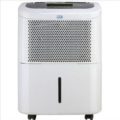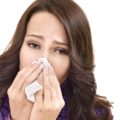
You may notice that when the weather is warmer, your allergies and asthma symptoms tend to be more severe. Although there are different factors that contribute to this, one of the main reasons behind it is the high level of humidity that tends to occur over the summer.
In this post, we'll take a look at three of the most common allergens and health issues that are known to be exacerbated by humidity:
Dust mites – WebMD notes that approximately 20 million Americans are allergic to these microscopic bugs, experiencing symptoms such as itchy, watery eyes, a runny, stuffy nose and sneezing. Dust mites are more common in July and August because they can only survive when the temperatures are warm and humid.
Heat stroke – For people who suffer from asthma or other respiratory conditions, humidity can be extremely dangerous, as it prevents the body from being able to cool itself down.
Mold – According to the U.S. Centers for Disease Control and Prevention, this invasive fungus can lead to potentially serious health complications including nasal stuffiness, eye irritation, wheezing, skin irritation, fever, shortness of breath and lung infections. The spores thrive in damp conditions caused by moisture and humidity.
The good news is, there are plenty of steps that allergy and asthma sufferers can take to keep humidity levels down and eliminate allergens — from using hypoallergenic bedding to purchasing dehumidifiers. To find out more about how you can prevent and address each of the problems listed above, check out Allergy Be Gone's infographic on humidity.









